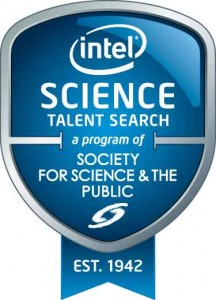Intel Science Talent Search: Social Roles Seen Through Eye Movements
 The Intel Science Talent Search (Intel STS), the nation’s most prestigious pre-college science competition, recognizes and rewards 300 student semifinalists and their schools each year. The 40 finalists are then invited to Washington, DC, where they display their work in public, meet with notable scientists, and compete for a $100,000 prize.
The Intel Science Talent Search (Intel STS), the nation’s most prestigious pre-college science competition, recognizes and rewards 300 student semifinalists and their schools each year. The 40 finalists are then invited to Washington, DC, where they display their work in public, meet with notable scientists, and compete for a $100,000 prize.
Representing the field of psychological science in this year’s contest was Michael Zhang of Smithtown High School East in New York, who investigated how visual behavior reflects the self-perception of human subjects playing one of four distinctive roles.
Zhang assigned each participant the role of thief, security guard, cleaning person, or tourist. While the participants viewed sequences of randomly selected scenes from hotel rooms, beaches, airport terminals, and checkout counters, Zhang tracked their eye movements in real time and found that participants demonstrated different visual behaviors depending on their roles. There was a particularly strong difference between the eye movements of the security guards and thieves.
Zhang believes that understanding the substantial information contained in eye movements can improve airport security and marketing techniques.





APS regularly opens certain online articles for discussion on our website. Effective February 2021, you must be a logged-in APS member to post comments. By posting a comment, you agree to our Community Guidelines and the display of your profile information, including your name and affiliation. Any opinions, findings, conclusions, or recommendations present in article comments are those of the writers and do not necessarily reflect the views of APS or the article’s author. For more information, please see our Community Guidelines.
Please login with your APS account to comment.